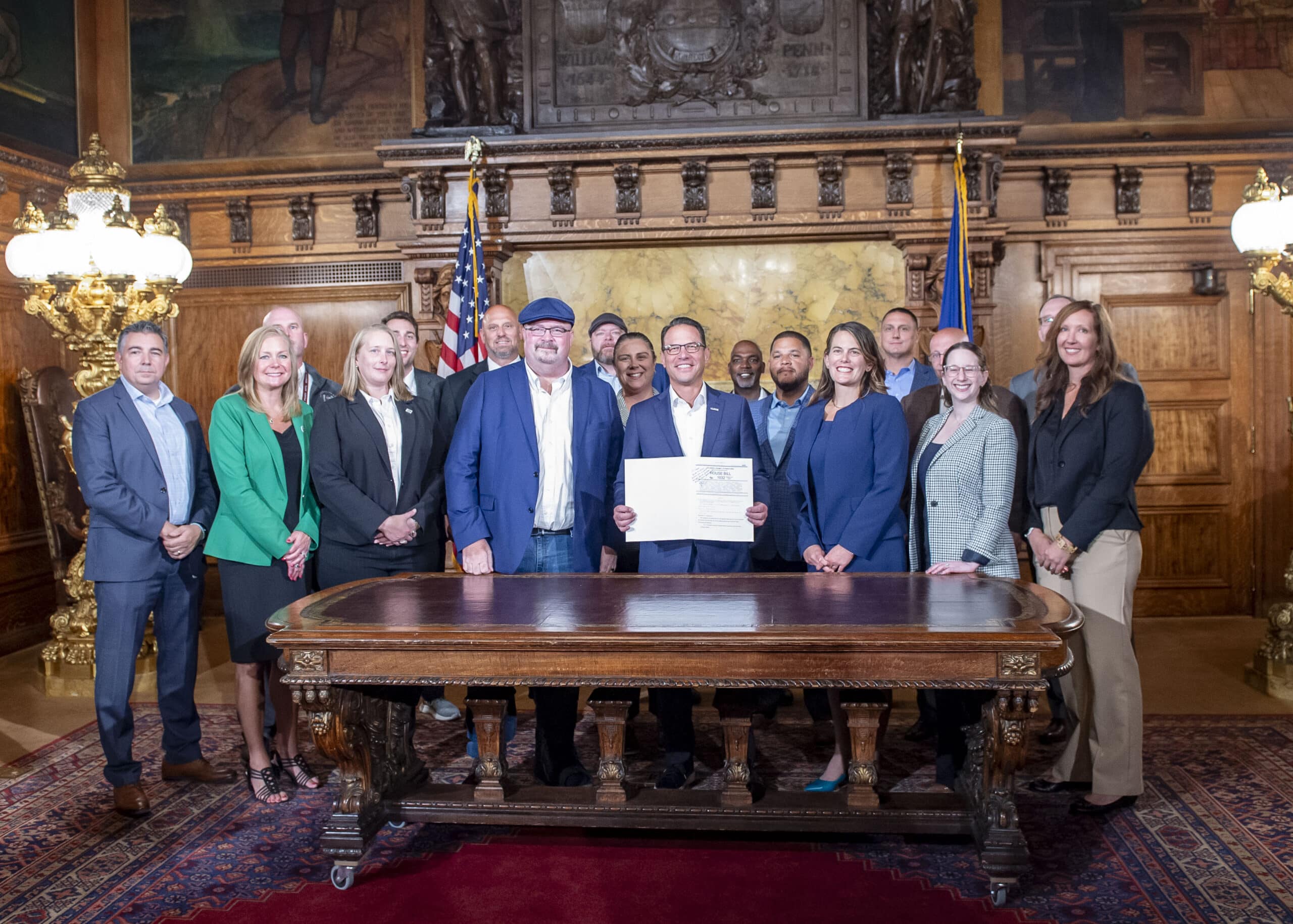Generation180 helps lawmakers fund solar energy projects for Pennsylvania schools
Pennsylvania has taken a significant step forward in advancing solar energy and upgrading educational facilities by enacting the Solar for Schools Grant Program. This groundbreaking legislation (HB1032) introduced by Representative Elizabeth Fielder (D – 184th District), created a grant program with $24 million in state funds to help schools across the Commonwealth manage their energy needs with clean, affordable energy and become leaders in the energy transition.
This couldn’t have come at a better time. In Generation180’s recently released report, Brighter Future: A Study on Solar in U.S. K-12 Schools, Pennsylvania has joined the top 10 Solar Schools States with 38,812 MW of cumulative solar capacity at the beginning for 2024. We’ve also seen significant growth since 2020, reaching 7th place nationwide with over 20 MW of solar capacity added to our K-12 schools. The potential for continued solar growth at Pennsylvania’s schools stems from state grant programs coupled with federal tax incentives available to public entities since the Inflation Reduction Action was enacted in 2022.
Over the last year, Generation180 worked closely with Rep. Fiedler and the Solar for Schools coalition to spread the word about solar’s benefits for schools, co-hosting and visiting existing solar-powered schools, such as Steelton-Highspire School District, Greater Johnstown Career & Technology Center, Carlisle Area School District, and Bethlehem Area School District to rally support for this great grant program. We discussed this program with school leaders at every school meeting we attended. We also developed campaign videos, led a statewide action alert, attended press conferences and committee hearings, and provided comments in front of Philadelphia’s City Council. Now, we’re celebrating with Rep Fiedler and the coalition across the state.
The Solar for Schools grant program is under development by the Department of Community and Economic Development (DCED). Still, grants can cover up to 50% of the total cost of a solar project and be coupled with Inflation Reduction Act incentives, which cover anywhere between 30% and 50% of the total project cost. The Solar for Schools program also prioritizes schools within 50 miles of a recent coal plant closure, and low-income districts will also be prioritized.
“Solar for Schools is a groundbreaking, bipartisan victory for rural, suburban, and urban communities alike. Thanks to the program’s potential to create good-paying jobs and reduce our environmental impact, we’ve been able to create an unprecedented coalition of labor leaders, environmental advocates, and legislators on both sides of the aisle to make it happen. I can’t wait to see schools take control of their energy costs and start saving!”
—Representative Elizabeth Fiedler
Representative Fiedler and the blue-green coalition – including clean energy nonprofits, faith-based organizations, and the construction and electrical trades also toured schools looking for ways to find cost savings in their cash-strapped budgets. Those schools included the Homer-Center School District, which is losing a large tax base because of a current coal plant closure; Central Cambria School District, which is struggling to keep up with increasing electricity rates; and schools in Rep. Fielder’s district in Southern Philadelphia. Other schools across the state are already using solar as a budget management solution, such as Steelton-Highspire and Midd-West School Districts.
The benefits of solar energy are far-reaching as they stand, but this program is designed to enhance those benefits, including reducing energy costs, maximizing state and federal incentives, and creating a brighter future for all.
Reducing Energy Costs
Utility bills are typically the second largest expense for schools. Schools can significantly reduce their electricity bills by powering their buildings with solar energy. This reduction in operational expenses frees up valuable resources that can be redirected towards enhancing educational programs, improving facilities, and investing in new technologies that benefit students and teachers alike.
Maximizing Incentives
The Solar for Schools grant program was designed to attract federal dollars to Pennsylvania through the Inflation Reduction Act’s solar energy investment tax credit. By leveraging these federal incentives, the state is reducing the financial burden of implementing solar energy projects, making solar more accessible for schools. Schools can also tap into any state incentives offered through their utilities or other state agencies.
Creating Good-Paying Jobs
Another significant benefit of this legislation is the growth of the solar industry in Pennsylvania. The installation and maintenance of solar energy systems create numerous good-paying jobs in the renewable energy sector. These opportunities contribute to the local economy and provide stable employment for residents, fostering economic growth and stability within the community.
Promoting Environmental Stewardship
Last but not least, the Solar for Schools Act is a major step towards reducing educational institutions’ carbon emissions. By transitioning to solar energy, schools can significantly decrease climate-harming pollution and provide opportunities for students to learn directly from their school’s solar arrays. This move towards cleaner energy contributes to the fight against climate change and instills a sense of pride in students, knowing that their schools are part of the solution.
Generation180 is helping schools explore solar energy by offering free solar feasibility studies to public K-12 schools with support from Met-Ed/Penelec Sustainable Energy Fund.
Pennsylvania’s Solar for Schools grant program represents an innovative approach to energy management in education. By reducing costs, maximizing federal incentives, creating good-paying jobs, and setting schools up to be clean energy leaders, this legislation offers a comprehensive solution to the energy challenges faced by schools. It’s a win-win-win situation for Pennsylvanians! As we celebrate this milestone, we look forward to a brighter, more sustainable future for our educational institutions and the generations of students they serve.















